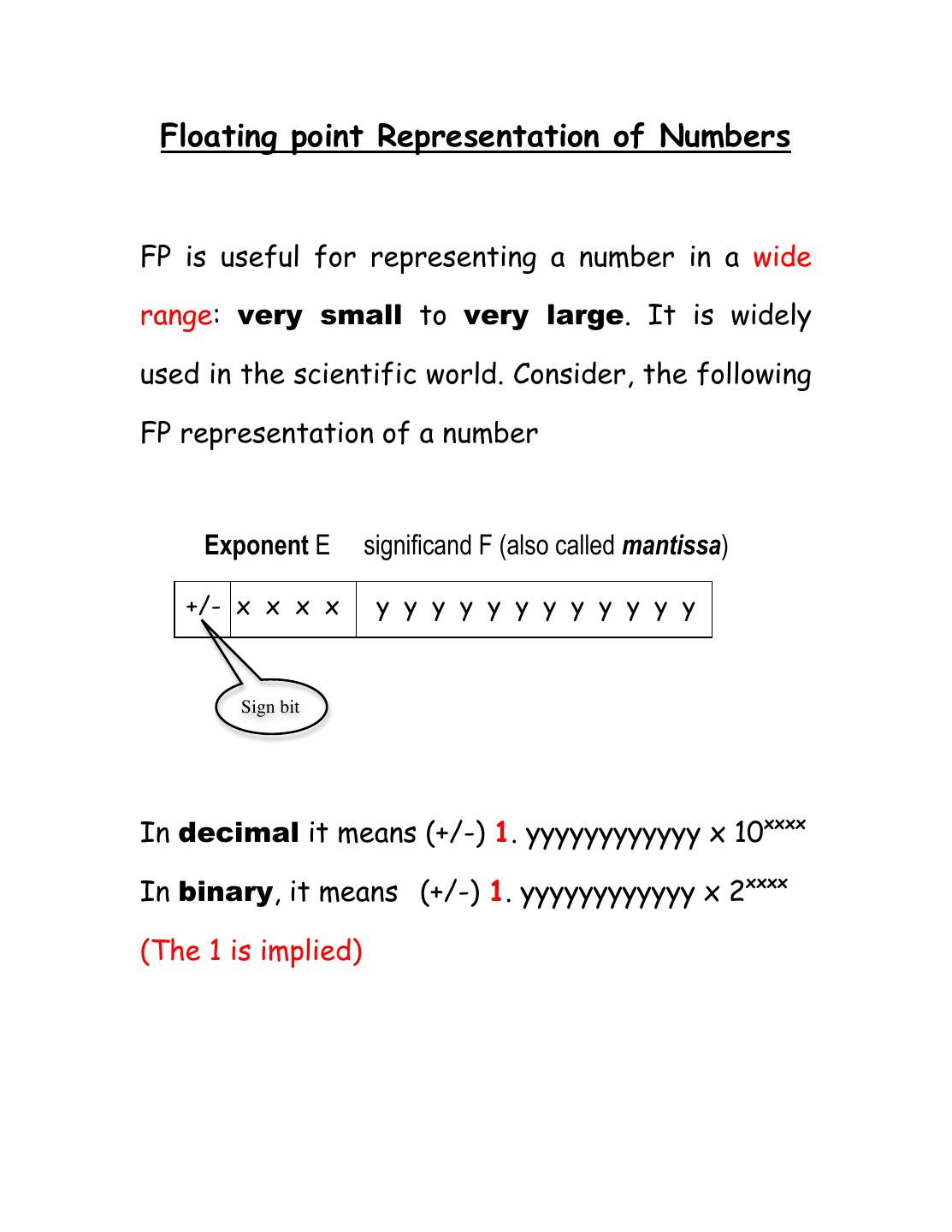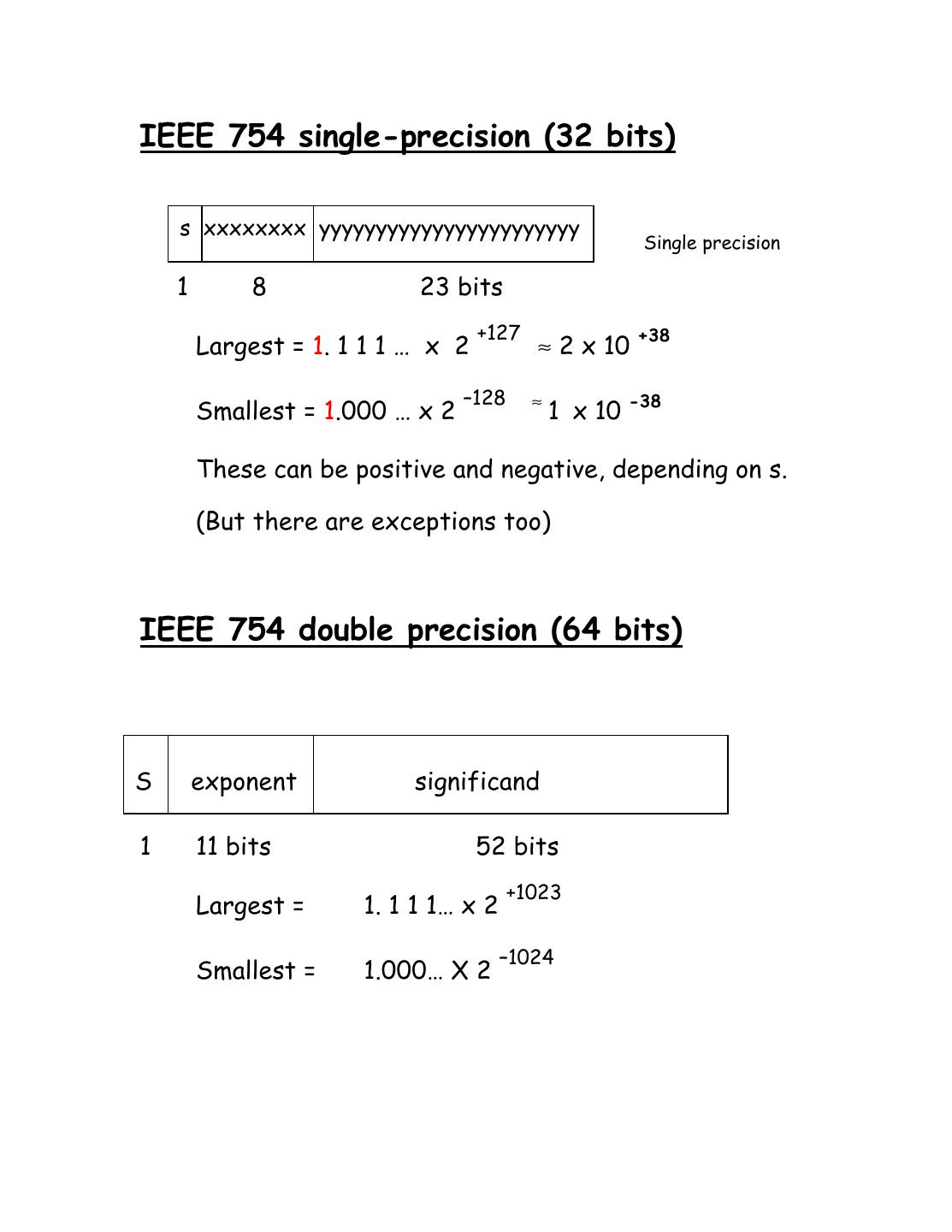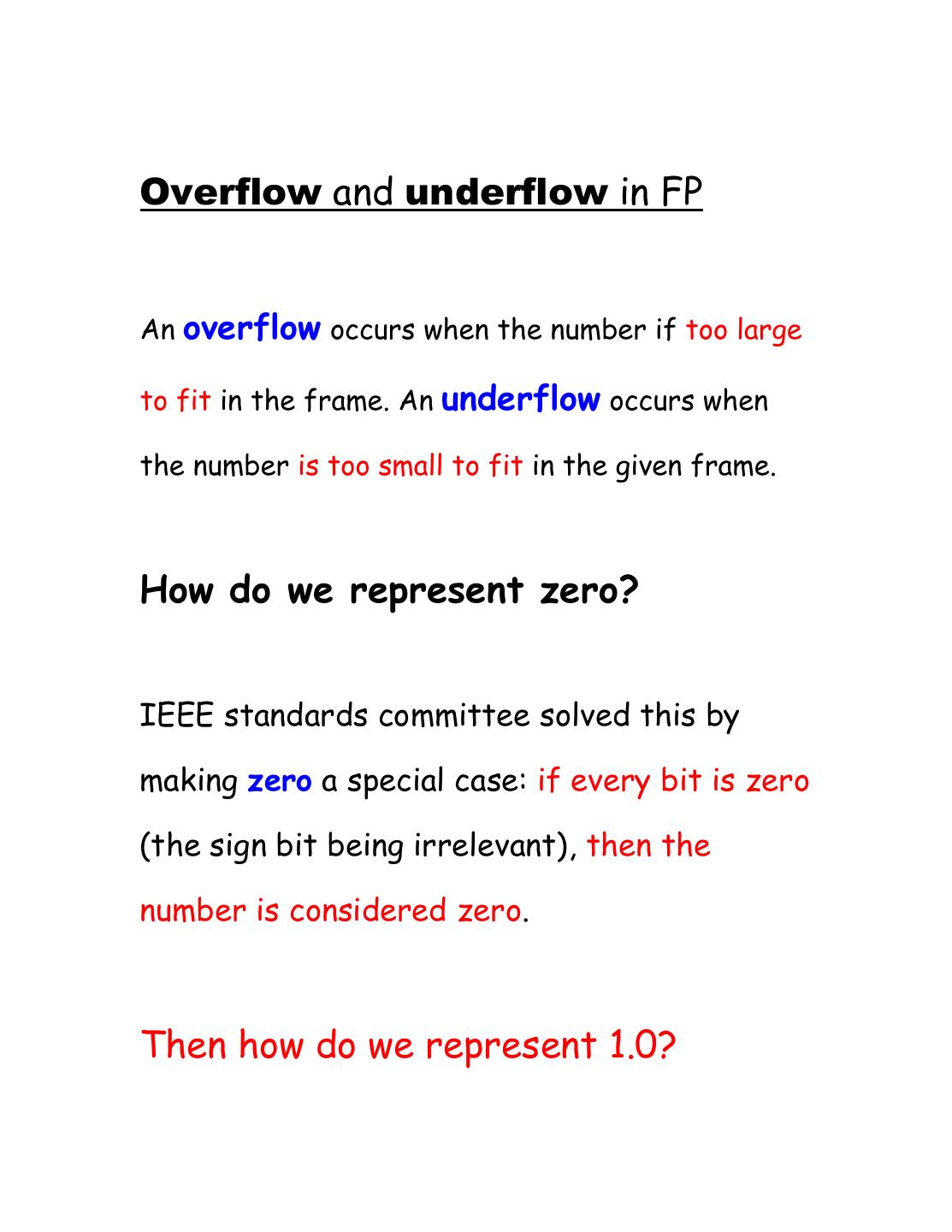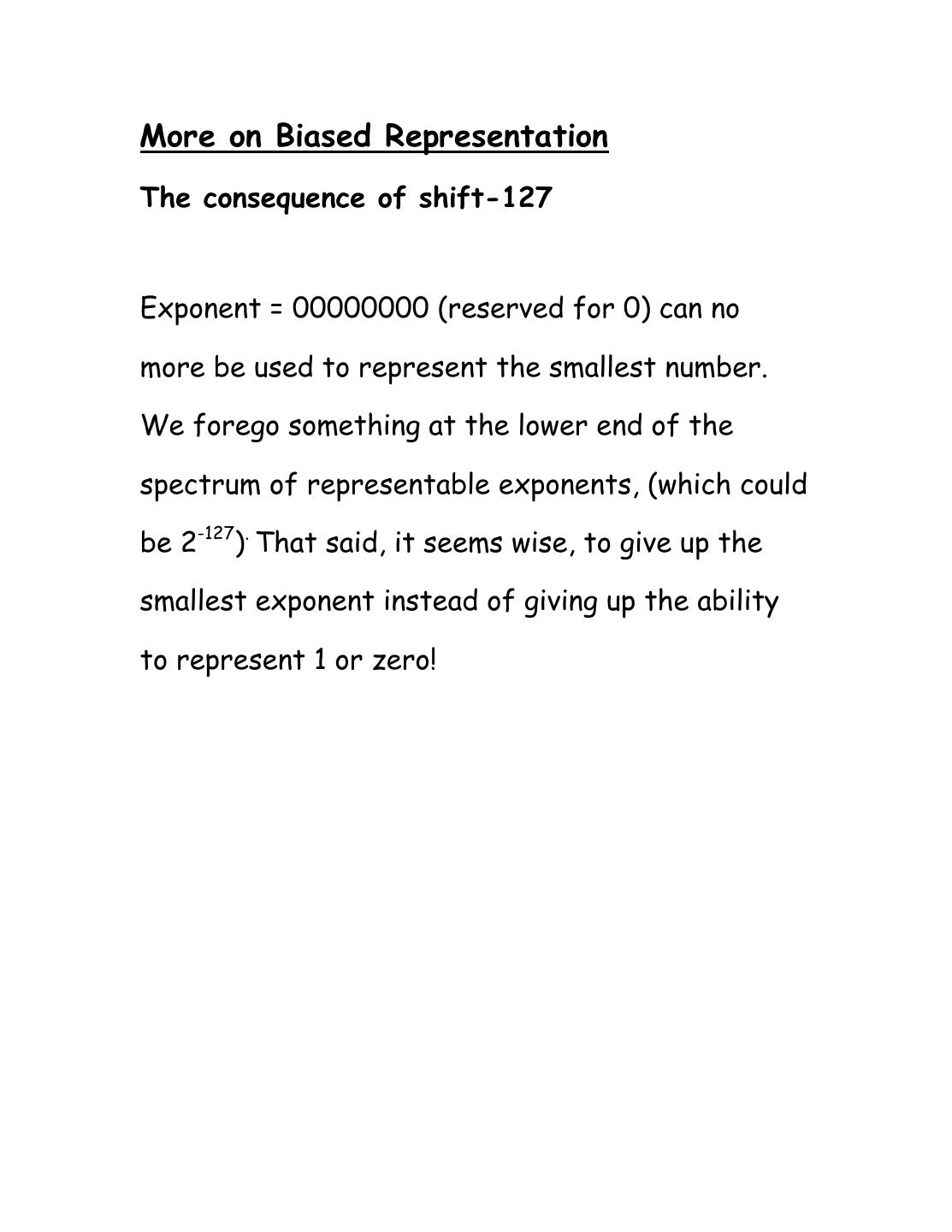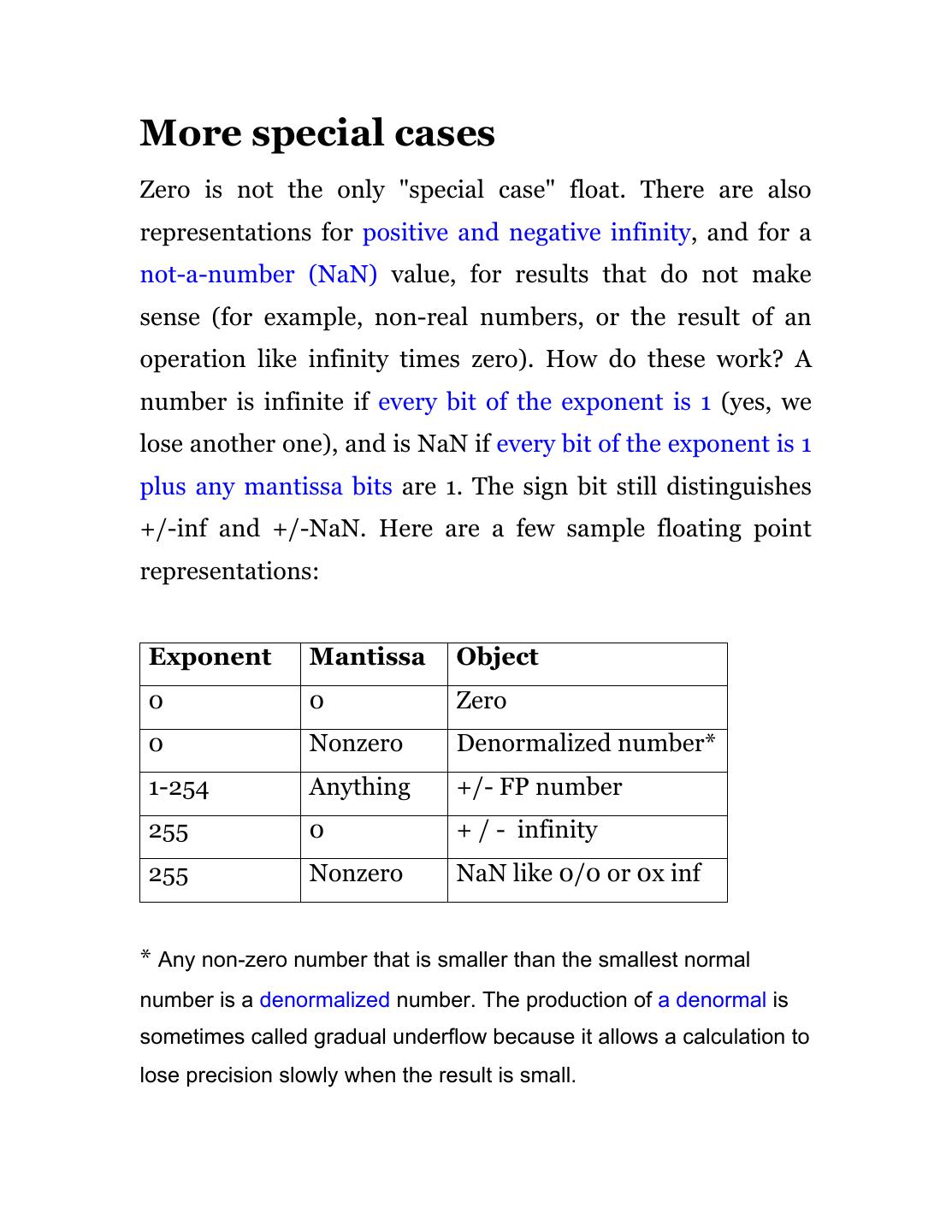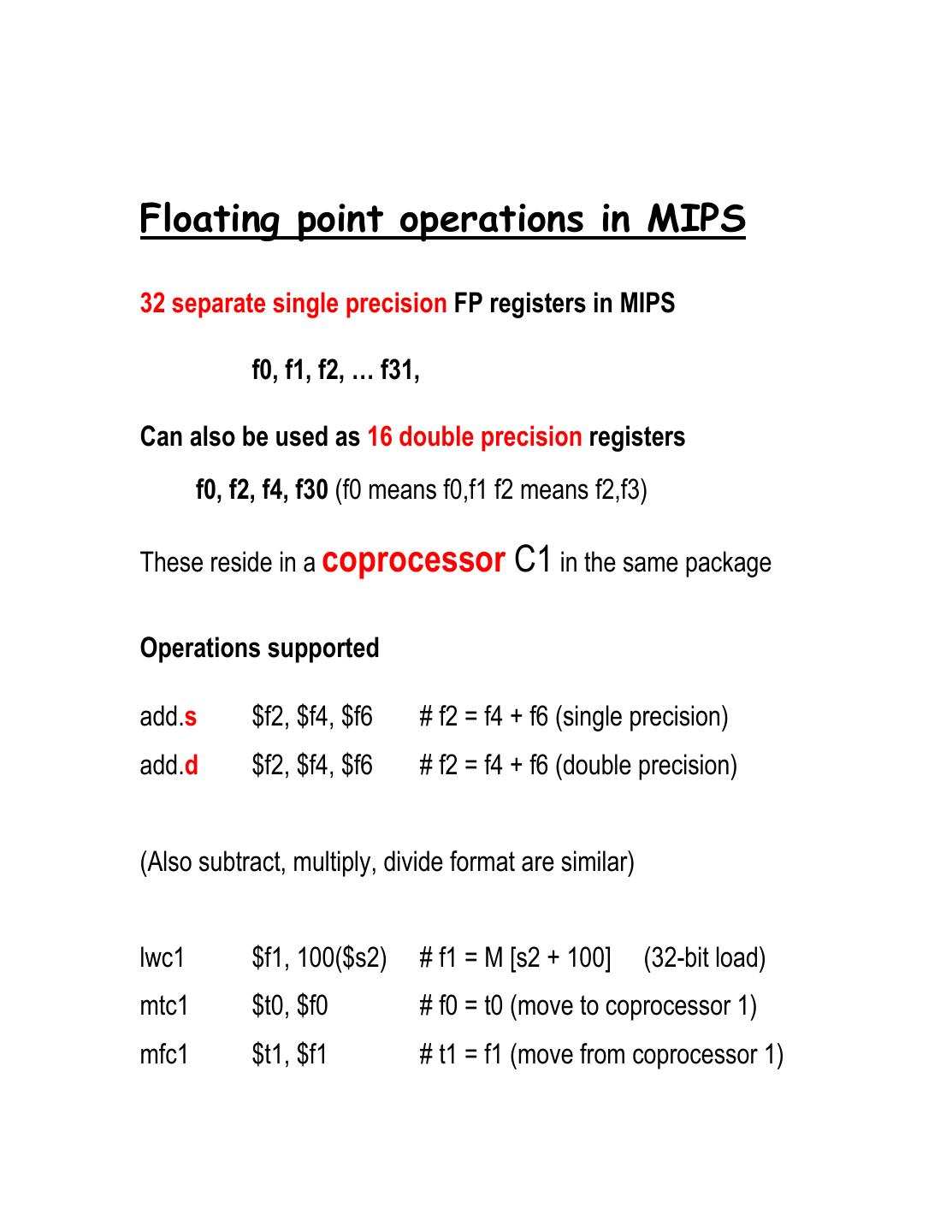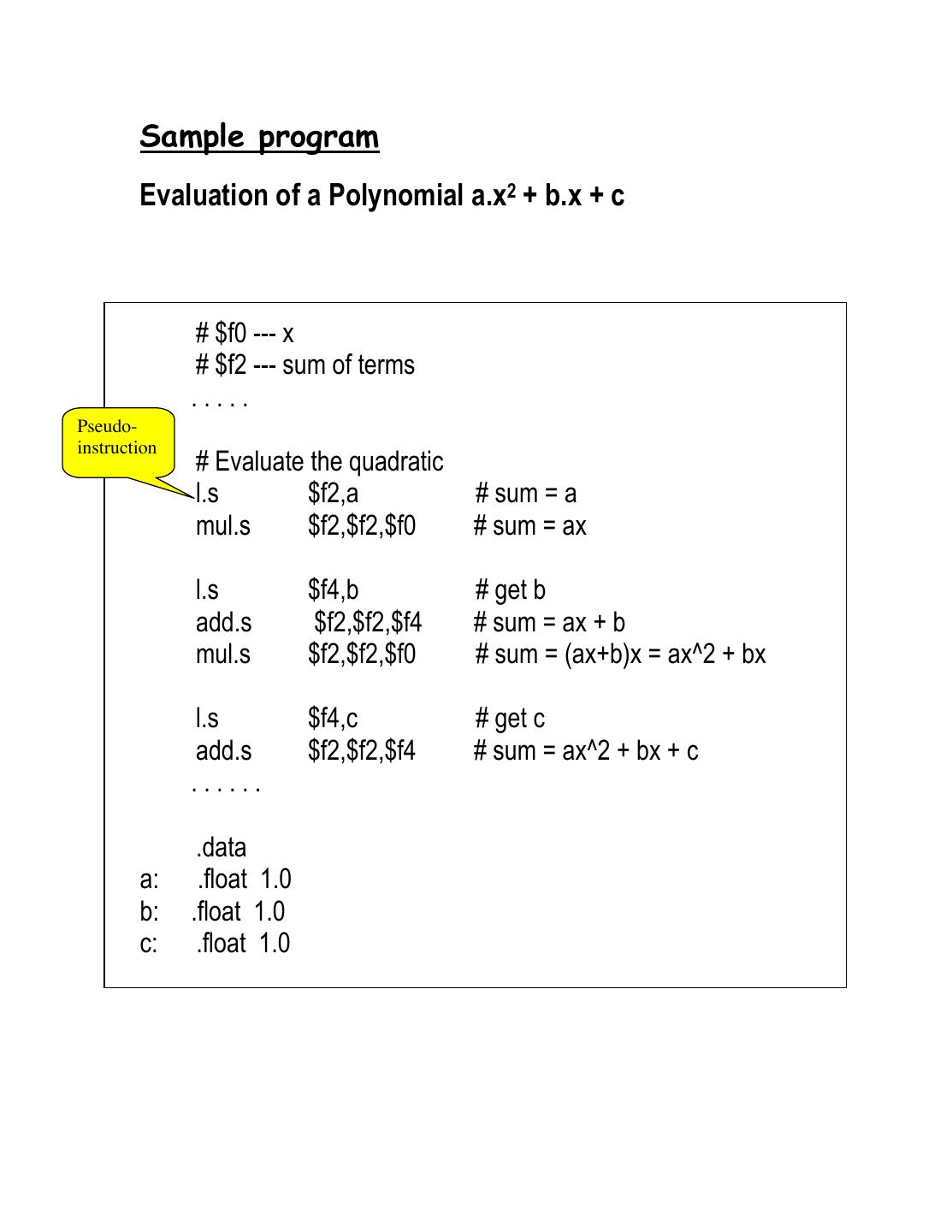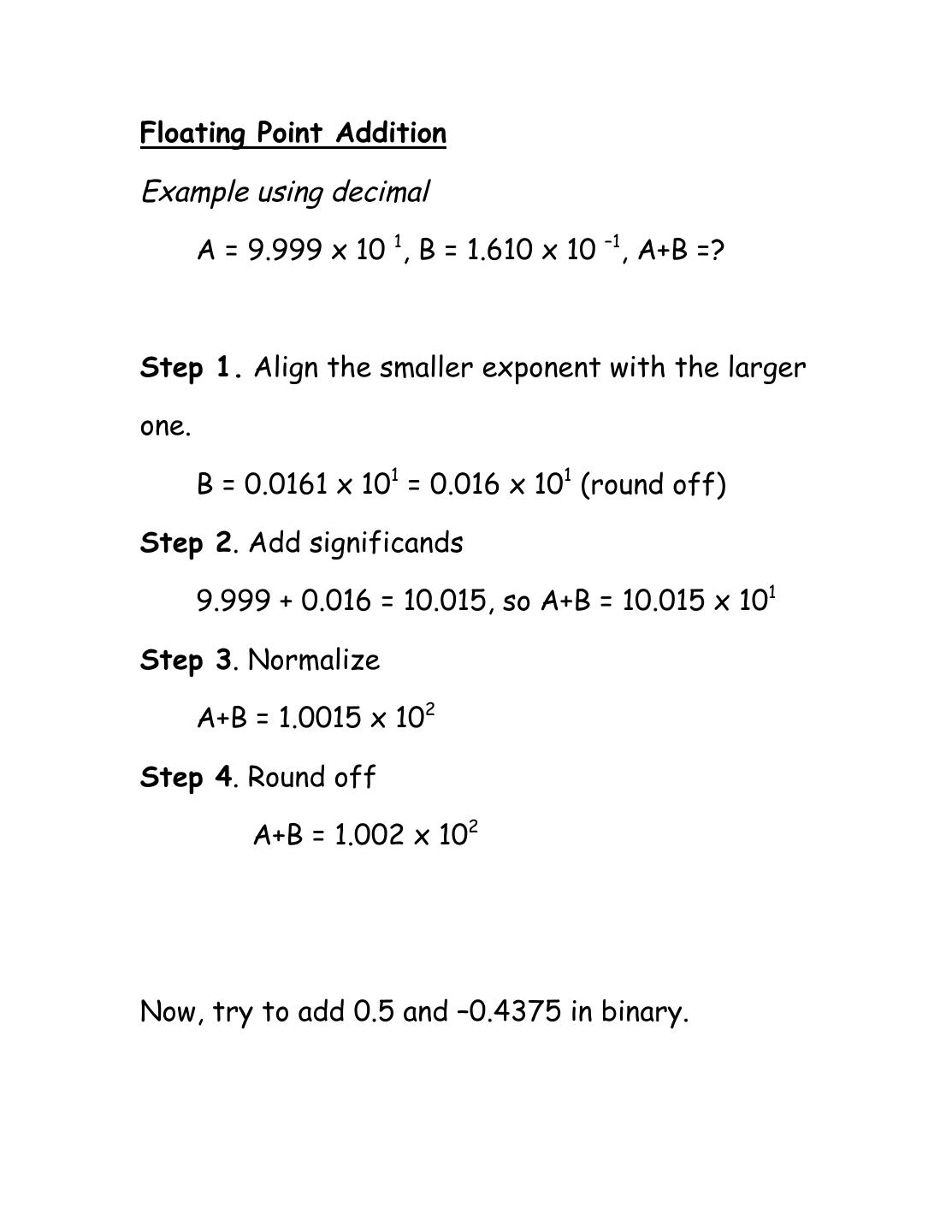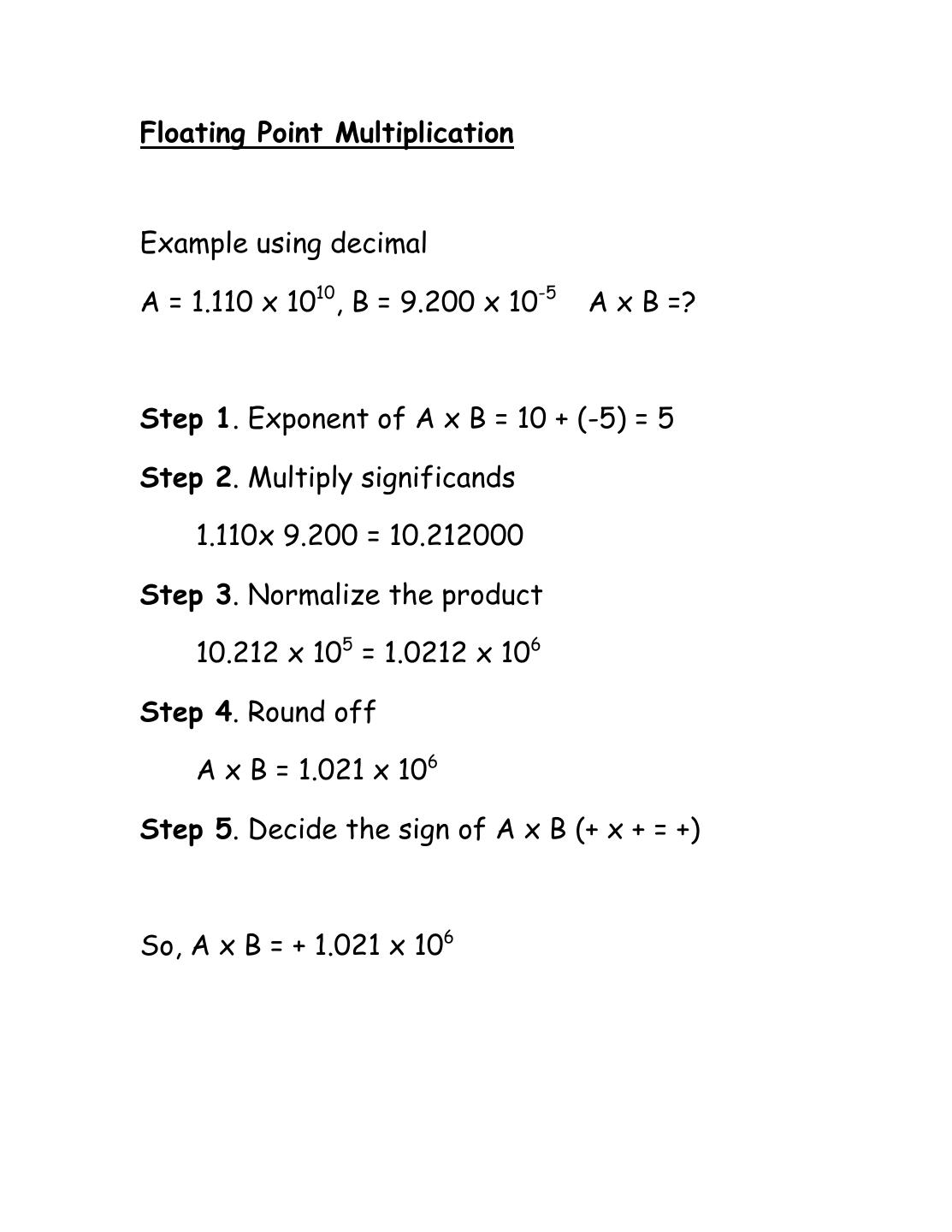- 快召唤伙伴们来围观吧
- 微博 QQ QQ空间 贴吧
- 文档嵌入链接
- 复制
- 微信扫一扫分享
- 已成功复制到剪贴板
12 计算机组成--数字的浮点表示
展开查看详情
1 . Floating point Representation of Numbers FP is useful for representing a number in a wide range: very small to very large. It is widely used in the scientific world. Consider, the following FP representation of a number Exponent E significand F (also called mantissa) +/- x x x x y y y y y y y y y y y y Sign bit In decimal it means (+/-) 1. yyyyyyyyyyyy x 10xxxx In binary, it means (+/-) 1. yyyyyyyyyyyy x 2xxxx (The 1 is implied)
2 .IEEE 754 single-precision (32 bits) s xxxxxxxx yyyyyyyyyyyyyyyyyyyyyyy Single precision 1 8 23 bits +127 +38 Largest = 1. 1 1 1 … x 2 ≈ 2 x 10 –128 ≈ -38 Smallest = 1.000 … x 2 1 x 10 These can be positive and negative, depending on s. (But there are exceptions too) IEEE 754 double precision (64 bits) S exponent significand 1 11 bits 52 bits +1023 Largest = 1. 1 1 1… x 2 –1024 Smallest = 1.000… X 2
3 .Overflow and underflow in FP An overflow occurs when the number if too large to fit in the frame. An underflow occurs when the number is too small to fit in the given frame. How do we represent zero? IEEE standards committee solved this by making zero a special case: if every bit is zero (the sign bit being irrelevant), then the number is considered zero. Then how do we represent 1.0?
4 .Then how do we represent 1.0? It should have been 1.0 x 20 (same as 0)! The way out of this is that the interpretation of the exponent bits is not straightforward. The exponent of a single-precision float is "shift- 127" encoded (biased representation), meaning that the actual exponent is (xxxxxxx minus 127). So thankfully, we can get an exponent of zero by storing 127. Exponent = 11111111 (i.e. 255) means 255-127 = 128 Exponent = 01111111 (i.e. 127) means 127-127 = 0 Exponent = 00000001 (i.e. 1) means 1-127 = -126
5 .More on Biased Representation The consequence of shift-127 Exponent = 00000000 (reserved for 0) can no more be used to represent the smallest number. We forego something at the lower end of the spectrum of representable exponents, (which could be 2-127). That said, it seems wise, to give up the smallest exponent instead of giving up the ability to represent 1 or zero!
6 .More special cases Zero is not the only "special case" float. There are also representations for positive and negative infinity, and for a not-a-number (NaN) value, for results that do not make sense (for example, non-real numbers, or the result of an operation like infinity times zero). How do these work? A number is infinite if every bit of the exponent is 1 (yes, we lose another one), and is NaN if every bit of the exponent is 1 plus any mantissa bits are 1. The sign bit still distinguishes +/-inf and +/-NaN. Here are a few sample floating point representations: Exponent Mantissa Object 0 0 Zero 0 Nonzero Denormalized number* 1-254 Anything +/- FP number 255 0 + / - infinity 255 Nonzero NaN like 0/0 or 0x inf * Any non-zero number that is smaller than the smallest normal number is a denormalized number. The production of a denormal is sometimes called gradual underflow because it allows a calculation to lose precision slowly when the result is small.
7 .Floating point operations in MIPS 32 separate single precision FP registers in MIPS f0, f1, f2, … f31, Can also be used as 16 double precision registers f0, f2, f4, f30 (f0 means f0,f1 f2 means f2,f3) These reside in a coprocessor C1 in the same package Operations supported add.s $f2, $f4, $f6 # f2 = f4 + f6 (single precision) add.d $f2, $f4, $f6 # f2 = f4 + f6 (double precision) (Also subtract, multiply, divide format are similar) lwc1 $f1, 100($s2) # f1 = M [s2 + 100] (32-bit load) mtc1 $t0, $f0 # f0 = t0 (move to coprocessor 1) mfc1 $t1, $f1 # t1 = f1 (move from coprocessor 1)
8 . Sample program Evaluation of a Polynomial a.x2 + b.x + c # $f0 --- x # $f2 --- sum of terms ..... Pseudo- instruction # Evaluate the quadratic l.s $f2,a # sum = a mul.s $f2,$f2,$f0 # sum = ax l.s $f4,b # get b add.s $f2,$f2,$f4 # sum = ax + b mul.s $f2,$f2,$f0 # sum = (ax+b)x = ax^2 + bx l.s $f4,c # get c add.s $f2,$f2,$f4 # sum = ax^2 + bx + c ...... .data a: .float 1.0 b: .float 1.0 c: .float 1.0
9 .Floating Point Addition Example using decimal A = 9.999 x 10 1, B = 1.610 x 10 –1, A+B =? Step 1. Align the smaller exponent with the larger one. B = 0.0161 x 101 = 0.016 x 101 (round off) Step 2. Add significands 9.999 + 0.016 = 10.015, so A+B = 10.015 x 101 Step 3. Normalize A+B = 1.0015 x 102 Step 4. Round off A+B = 1.002 x 102 Now, try to add 0.5 and –0.4375 in binary.
10 .Floating Point Multiplication Example using decimal A = 1.110 x 1010, B = 9.200 x 10-5 A x B =? Step 1. Exponent of A x B = 10 + (-5) = 5 Step 2. Multiply significands 1.110x 9.200 = 10.212000 Step 3. Normalize the product 10.212 x 105 = 1.0212 x 106 Step 4. Round off A x B = 1.021 x 106 Step 5. Decide the sign of A x B (+ x + = +) So, A x B = + 1.021 x 106
11 .



